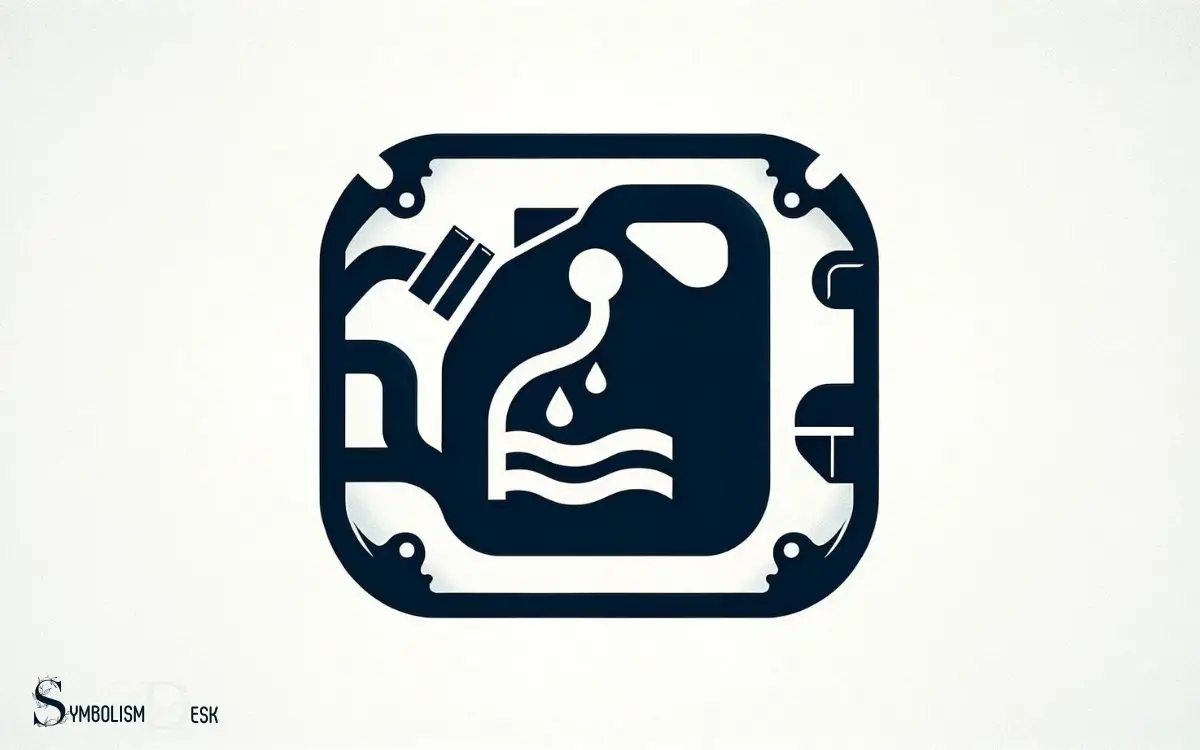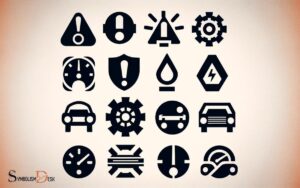Where to Put Water in Car Symbol? Coolant Level!
To add water to your car, locate the coolant reservoir under the hood. It’s usually a translucent container with a label indicating the coolant level requirements.
Carefully open the cap—only when the engine is cool—and pour in a mixture of distilled water and antifreeze up to the indicated level.
When the water symbol on your car’s dashboard illuminates, it signals the need to check and possibly add water to your car’s cooling system.
Here’s how to do it safely:
Keep your engine running smoothly by checking and maintaining the correct coolant levels as part of regular vehicle maintenance.

Key Takeaway
Understanding the Water Symbol
The water symbol in a car indicates the location for adding a specific amount of water or coolant to the vehicle’s reservoir. This symbol is crucial for maintaining the proper functioning of the car’s cooling system. The thermometer in water car symbol often appears on the dashboard to warn drivers of potential overheating in the engine. This alert emphasizes the importance of checking coolant levels and ensuring there are no leaks or blockages in the cooling system. By addressing these issues promptly, you can prevent significant engine damage and keep your vehicle running safely and efficiently.
It typically looks like a small, wavy line or a jug with wavy lines above it. When this symbol lights up on the dashboard, it means that the coolant level is low and needs to be topped up.
It’s important to note that the cooling system should only be opened when the engine is cool to avoid burns or injuries.
Understanding this symbol is essential for every driver, as it helps prevent overheating and potential damage to the engine. Keeping an eye on the water symbol and responding promptly can help maintain the car’s optimal performance.
Importance of Water in Your Car
Regularly checking and maintaining the water or coolant level in your car is crucial for preventing overheating and ensuring optimal engine performance.
Water plays a vital role in dissipating heat generated by the engine, keeping it at a safe operating temperature. Without sufficient water or coolant, the engine is at risk of overheating, which can lead to severe damage and costly repairs.
Additionally, water helps to prevent corrosion and rust within the cooling system, ensuring its longevity and efficiency. Proper maintenance of the water level also contributes to fuel efficiency and overall vehicle performance.
Understanding the importance of water in your car is essential for the longevity and smooth operation of your vehicle.
Identifying the Water Fill Points
To effectively manage the water or coolant level in a car, it’s important to identify the specific points for filling water. Most modern cars have clear markings and symbols to indicate the water fill points, making it easier for drivers to locate them.
Below is a table summarizing common locations for water fill points in cars:
| Location | Description |
|---|---|
| Radiator Cap | Found at the front of the engine compartment. |
| Coolant Reservoir | Located near the radiator, with a clearly marked “MAX” and “MIN” level. |
Identifying these points is crucial for maintaining the proper water level in the car’s cooling system.
Understanding where to add water ensures the car runs smoothly and avoids overheating. In the next section, we’ll delve into the process of adding water to the engine coolant.
Adding Water to Engine Coolant
One common location for adding water to the engine coolant is the coolant reservoir. This reservoir is typically a translucent plastic tank located near the radiator. When the engine is cool, the coolant level should be between the “min” and “max” marks on the reservoir.
If the level is below the “min” mark, it indicates a need to add a mixture of water and coolant to the reservoir. It’s essential to use a 50/50 mixture of coolant and water to ensure proper cooling and protection against freezing and boiling.
Always refer to the vehicle’s manual to determine the specific type of coolant required. Once the water is added, the reservoir cap should be securely tightened.
Properly maintaining the water levels in the engine coolant system is crucial for the vehicle’s optimal performance and longevity.
Maintaining Proper Water Levels
Maintaining proper water levels in the engine coolant system is essential for preserving the vehicle’s optimal performance and longevity.
Regularly checking the coolant levels and ensuring that they are within the recommended range can prevent overheating and potential damage to the engine.
It is important to monitor for any signs of leaks or low coolant levels, as these can indicate underlying issues that need to be addressed promptly.
Additionally, following the manufacturer’s guidelines for the proper coolant-to-water ratio is crucial for preventing corrosion and maintaining the system’s efficiency.
By maintaining the proper water levels in the engine coolant system, drivers can contribute to the overall health and performance of their vehicles, ultimately leading to a smoother and more reliable driving experience.
Conclusion
Keeping an eye on the water symbol in your car is crucial for maintaining its performance. Just like a well-oiled machine, your car needs water to function smoothly.
By understanding the water fill points and adding water to engine coolant when needed, you can ensure that your car stays in top shape. Remember, a car without water is like a plant without sunlight – it just won’t thrive.






